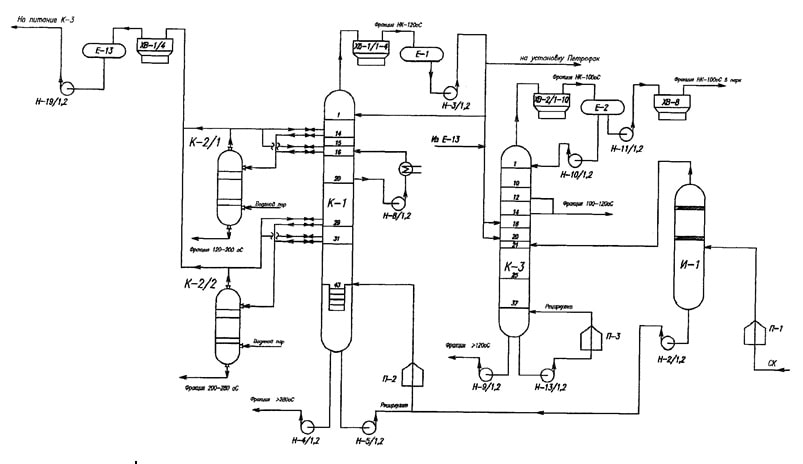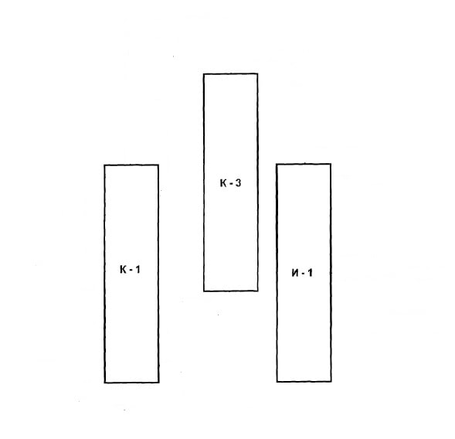Energy and resource saving processes in chemical technology, petrochemistry and biotechnology
Natural gas, oil and coal are the main sources of hydrocarbons.
In natural gas extraction, condensate is extracted in addition to the gaseous mixture, which creates a number of problems during transportation: the formation of liquid plugs, which leads to increased corrosion of equipment and main pipelines, and sometimes to destruction due to hydraulic shocks. At the same time, condensate is a high–component substance from which useful components can be obtained, so it is also a marketable product.
Gas condensates are the most valuable raw material of petrochemical synthesis and are widely used for the production of motor fuels.[1]
Gas condensates of different fields differ significantly in composition.
The natural gas consumption market has recently undergone significant changes. More and more consumers prefer to buy liquefied natural gas (LNG), and both suppliers and consumers have their own standards, which must meet the raw materials sold. Natural gas transported through pipelines differs in its characteristics from LNG. All these problems can be divided as follows.
1. Technology problems. When processing natural gas fields are the following objectives:
• purification from harmful impurities: CO2, H2S and mercaptans (weak in aggressiveness acids), corrosive equipment;
• separation of heavy fractions that make it difficult to pump natural gas through pipelines;
• separation of substances adversely affecting the energy performance of raw materials.
2. The way of transportation of natural gas causes not only different technological preparation of natural gas, but also the solution of questions with transport (construction, rent or purchase of gas carriers, production of isothermal tanks, etc.). However, the solution of these issues promises profitable contracts and an increase in the number of participants in the production and sale of LNG in the regions of the world.
3. As a rule, the main gas pipelines, through which natural gases are pumped, have a length of several thousand kilometers. The transfer of gas is carried out through several sovereign States, which means possible economic and political problems. Contractual relations do not always meet the realities of the market, due to the long terms of contracts for the supply of products.[2]
The aim of the work was to develop scientific principles of improvement (modernization) of existing technologies and specialized equipment, improving the quality of products, the creation of technologies for the production of new types of finished products. To obtain the result it was carried out:
• study of the composition and physico-chemical properties of the feedstock and its fractions as one of the most important factors affecting the process and the quality of the products;
• mathematical modeling of the processes of separation of hydrocarbon mixtures in industrial plants, development of technical solutions to improve efficiency;
• improvement of technological processes and hardware design, development of recommendations on optimization of process parameters and on this basis improvement of quality of commodity products, expansion of their range;
• on the basis of a detailed study of the composition and properties of Cenomanian condensates development of production technology of naphthenic acids;
• obtaining salts of various metals and testing them as commercial products.
According to the initial project installation LKS–35–64 (Pic. 1), which is part of the complex production of motor fuels, is designed to process a mixture of deethanized stable gas condensate and oil of the Urengoy field in a ratio of 9:1 to obtain a component of gasoline A–76, TC–1 fuel, wide–fraction diesel fuel, boiler fuel.[4]

Pic. 1 – Schematic diagram of the installation of motor fuels
The Unit is a complex complex consisting of three main sections: section 100 (catalytic reforming unit FR. 70–140), section 200 (installation of Hydrotreating and dewaxing of diesel fuel FR. 240–340), section 300 (installation of Hydrotreating jet fuel FR. 140–240). The raw material base of the plants included in the complex LKS–35–64 should provide UMT, but its work has a number of serious shortcomings.
Option of reconstruction of the installation of motor fuels for fractions 70–100°C, 140–240°C, 180–340°C.
Upgrading is to organize the two-stage valve lift, and reduction of by-pass flows due to the installation of additional small partitions. As a result, the uniform operation of the valve plates in a given interval of loads on the UMT is ensured. In addition to the reconstruction of column devices, the modernization of the technological scheme of installation of motor fuels is proposed.[2-5]
The material balance of UMT after the proposed modernization is presented on pic. 2.

Pic. 2 – The yield of fractions for the UMT after the proposed modernization
(animation: 5 frames, 5 repeat cycles, 137 kilobytes)
Thus it can be concluded that the analysis of the design, as well as the results of computer simulation of the process revealed a number of significant shortcomings and justify the direction of further research and development.
The well–known design of the engine fuel recovery unit has a low separation efficiency due to inefficient contact devices in the column.
Improved separation efficiency is achieved by changing the contact devices in the column.
The master's thesis is currently in the writing stage. Final completion: July 2019. The full text of the work and materials on the topic can be obtained from the author or his supervisor after the specified date.
Академия, 1999. – 448 с.